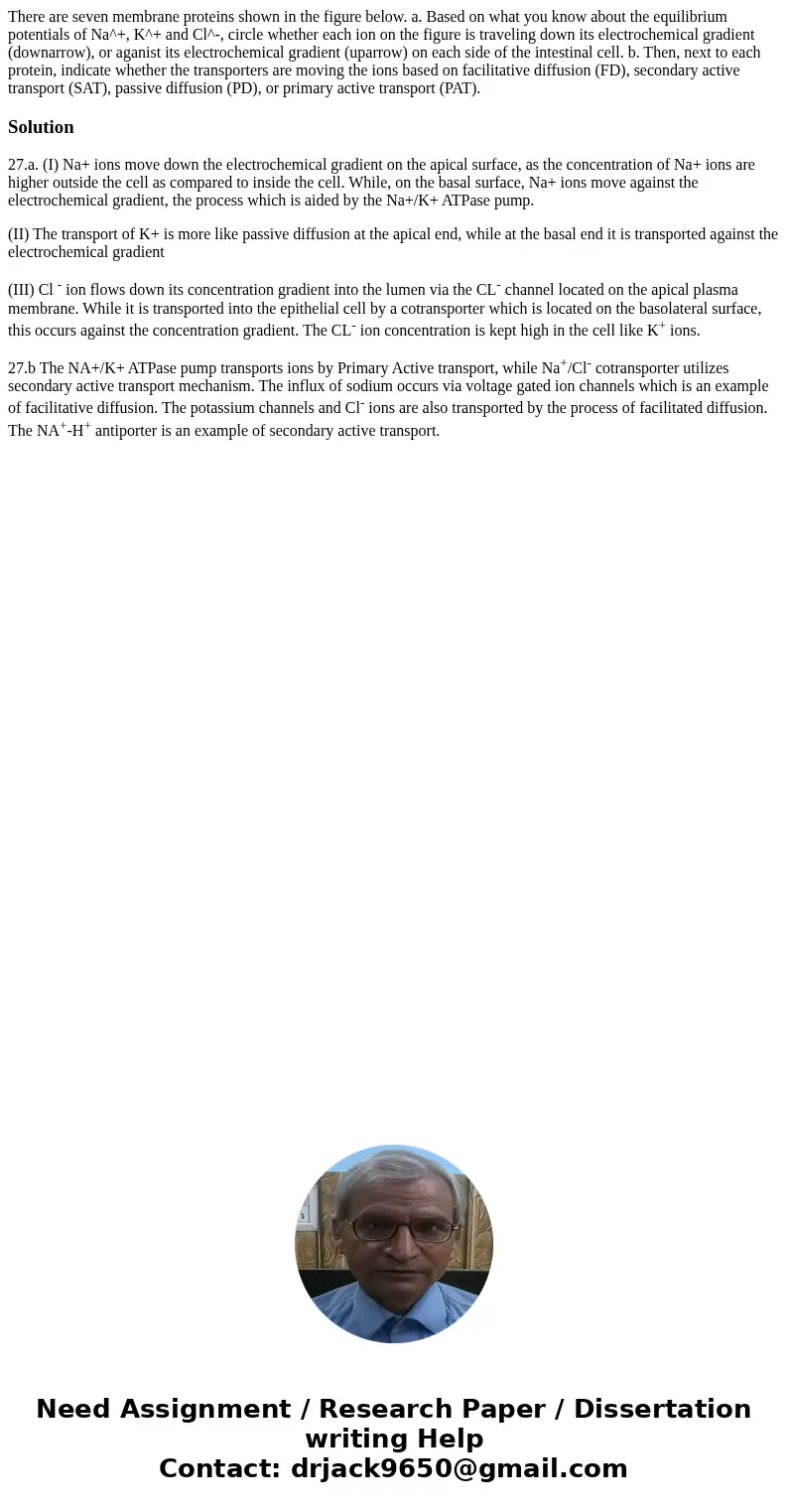There are seven membrane proteins shown in the figure below
Solution
27.a. (I) Na+ ions move down the electrochemical gradient on the apical surface, as the concentration of Na+ ions are higher outside the cell as compared to inside the cell. While, on the basal surface, Na+ ions move against the electrochemical gradient, the process which is aided by the Na+/K+ ATPase pump.
(II) The transport of K+ is more like passive diffusion at the apical end, while at the basal end it is transported against the electrochemical gradient
(III) Cl - ion flows down its concentration gradient into the lumen via the CL- channel located on the apical plasma membrane. While it is transported into the epithelial cell by a cotransporter which is located on the basolateral surface, this occurs against the concentration gradient. The CL- ion concentration is kept high in the cell like K+ ions.
27.b The NA+/K+ ATPase pump transports ions by Primary Active transport, while Na+/Cl- cotransporter utilizes secondary active transport mechanism. The influx of sodium occurs via voltage gated ion channels which is an example of facilitative diffusion. The potassium channels and Cl- ions are also transported by the process of facilitated diffusion. The NA+-H+ antiporter is an example of secondary active transport.

 Homework Sourse
Homework Sourse